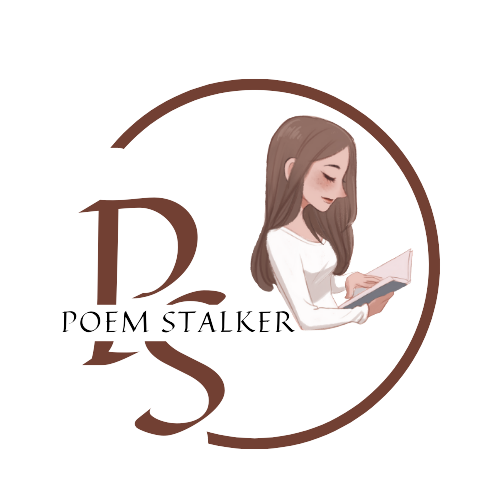
A poetry is a form of literary expression that uses language to convey emotions, ideas, or experiences in a concentrated and imaginative manner. poetry often employs various literary devices such as rhyme, rhythm, metaphor, simile, symbolism, and wordplay to create a unique and artistic arrangement of words. Poems can come in many different styles and structures, ranging from traditional forms like sonnets and haikus to more free-form and experimental compositions.
WHAT IS POETRY?
It allows writers to explore themes, evoke emotions, and paint vivid imagery using concise and carefully chosen words. poetry often seeks to capture the beauty of language and the essence of a moment or thought. Poems can cover a wide range of topics, from love and nature to social and political issues, and they can evoke a wide range of emotional responses from readers or listeners.
Overall, It is a powerful means of creative expression that engages both the intellect and the emotions, inviting readers to interpret and appreciate its depth and beauty in their own ways.
Poetry and stanza are closely related because a stanza is a structural element within a poem.
want read any sad poetry
What Is METER?

In it, meter refers to the rhythmic pattern of stressed and unstressed syllables in a line of verse. It is a fundamental element of traditional poetry and plays a significant role in establishing the overall rhythm and musicality of a poem. Meter and stanza are both important elements of poetry. Meter creates a predictable pattern of stressed and unstressed syllables, which contributes to the poem’s flow, pacing, and auditory appeal when read aloud.
Different cultures and poetic traditions have developed various meters, each with its own rules and characteristics. Some common examples of meters include:
-
Iambic :
“Iambic” refers to a specific metrical pattern in poetry, particularly in English verse. It is a type of poetic meter that consists of alternating stressed and unstressed syllables within a line of poetry. The term “iambic” comes from the Greek word “iamb,” which refers to a metrical foot consisting of one unstressed syllable followed by one stressed syllable (da-DUM).
In iambic meter, each metrical foot is an iamb, and the pattern of stressed and unstressed syllables repeats throughout the line. The most common form of iambic meter in English poetry is iambic pentameter, which consists of five metrical feet per line. Each foot contains an unstressed syllable followed by a stressed syllable.
Here’s an example of a line in iambic pentameter:
“To be or not to be, that is the question.”
In this line, the stressed and unstressed syllables create the iambic pattern: da-DUM / da-DUM / da-DUM / da-DUM / da-DUM.
Iambic meter is widely used in English poetry and has been a dominant pattern in many poetic forms and styles. It can create a natural and conversational rhythm that closely resembles spoken language, making it versatile for various poetic themes and tones.
-
Trochaic
“Trochaic” is another specific metrical pattern in poetry, characterized by a rhythmic arrangement of stressed and unstressed syllables. It is the opposite of iambic meter. In trochaic meter, each metrical foot consists of one stressed syllable followed by one unstressed syllable (DUM-da).
The term “trochaic” comes from the Greek word “trochee,” which refers to this particular metrical foot. Trochaic meter has a distinct and often lively rhythm that can create a different poetic effect compared to other meters.
Here’s an example of a line in trochaic meter:
“Tell me not in mournful numbers.”
In this line, the stressed and unstressed syllables create the trochaic pattern: DUM-da / DUM-da / DUM-da / DUM-da / DUM-da.
Trochaic meter is less common in English poetry than iambic meter, but it has been used effectively by poets to achieve specific rhythmic and thematic effects. Just like iambic meter, trochaic meter can be found in various poetic forms and styles, and its rhythmic qualities contribute to the overall musicality and tone of the poem.
-
Anapestic
“Anapestic” is yet another specific metrical pattern in poetry, characterized by a rhythmic arrangement of syllables, particularly stressed and unstressed syllables. Anapestic meter consists of metrical feet in which two unstressed syllables are followed by a stressed syllable (da-da-DUM).
The term “anapest” comes from the Greek word “anapaistos,” which refers to this particular metrical foot. Anapestic meter has a light, bouncy, and often upbeat rhythm, making it well-suited for creating a sense of movement and energy in poetry.
Here’s an example of a line in anapestic meter:
“And the sound of a voice that is still.”
In this line, the stressed and unstressed syllables create the anapestic pattern: da-da / da-da / DUM.
Anapestic meter is less common than both iambic and trochaic meters in English poetry, but it has been used effectively by poets to convey a sense of quickness, excitement, or rapid motion. It can add a playful or lively quality to a poem and is often employed in humorous or whimsical verses.
-
Dactylic
“Dactylic” is a specific metrical pattern in poetry, characterized by a rhythmic arrangement of stressed and unstressed syllables. Dactylic meter consists of metrical feet in which one stressed syllable is followed by two unstressed syllables (DUM-da-da).
The term “dactyl” comes from the Greek word “daktulos,” which means “finger” and refers to the metrical foot’s finger-like arrangement of syllables. Dactylic meter has a distinctive and often flowing rhythm that can create a sense of movement or elegance in poetry.
Here’s an example of a line in dactylic meter:
“This is the forest pri-meval, the murmuring pines and the hem-locks.”
In this line, the stressed and unstressed syllables create the dactylic pattern: DUM-da-da / DUM-da-da / DUM-da-da / DUM-da-da.
Dactylic meter is less common in English poetry than some other meters, but it has been used effectively by poets to convey a sense of grandeur, rhythmical complexity, or a rolling, storytelling quality. It is often associated with epic poetry, such as Homer’s “Iliad” and “Odyssey,” and can also be used to create a sense of movement in descriptions of nature or landscapes.
-
Spondaic
“Spondaic” is a specific metrical pattern in poetry, characterized by a rhythmic arrangement of stressed syllables. Unlike many other metrical feet, spondaic meter consists of two consecutive stressed syllables (DUM-DUM).
The term “spondee” comes from the Greek word “spondeios,” which refers to this particular metrical foot. Spondaic meter has a heavy, emphatic rhythm and is often used for emphasis, to create a sense of weightiness, or to slow down the pace of a poem.
Here’s an example of a line in spondaic meter:
“Slowly, surely.”
In this line, the stressed syllables create the spondaic pattern: DUM-DUM.
Spondaic meter is relatively rare in English poetry and is often used sparingly for specific dramatic or impactful moments. It can be used to evoke a deliberate, solemn, or serious tone. While spondees can occur in combination with other metrical feet within a poem, an entire line or stanza written entirely in spondaic meter is less common due to its heavy and uniform rhythm.
The choice of meter can greatly influence the mood, tone, and overall feel of a poem. Poets use meter intentionally to enhance the meaning and impact of their work, and variations in meter can create shifts in pacing, emphasis, and emotional resonance.
SOME FACTS ABOUT POETRY
It is a diverse and ancient form of literary expression that has been practiced in various cultures throughout history. Here are some key facts about poetry:
- It comes in many forms and styles, including sonnets, haikus, limericks, free verse, and epic poems. Each form has its own rules and structures.
- It often relies on figurative language such as metaphor, simile, personification, and symbolism to convey emotions and ideas in a condensed and vivid way.
- Many poems have a distinct rhythm and meter, created through patterns of stressed and unstressed syllables. This rhythmic quality contributes to the musicality of poetry.
- Rhyme is a common feature in poetry, where words at the end of lines or within lines may have similar sounds. Rhymes can be used for various effects, including emphasis and creating a sense of unity.
- Poets use vivid and descriptive imagery to paint pictures with words. They often appeal to the senses, creating a sensory experience for the reader.
- It is a powerful medium for expressing emotions, thoughts, and experiences. It can capture the complexities of human feelings in a way that resonates with readers.
- It explores a wide range of themes, including love, nature, mortality, identity, social issues, and more. Poets use their work to comment on and reflect upon the human condition.
- It has played a significant role in documenting history, culture, and societal changes. Epic poems like the Iliad and the Odyssey are examples of ancient poetry that preserved stories and values.
- It is found in virtually every culture and language around the world. Each culture has its own unique poetic traditions and forms.
- There are many renowned poets throughout history, including William Shakespeare, Emily Dickinson, Robert Frost, Langston Hughes, Maya Angelou, and Pablo Neruda, to name just a few.
- In addition to written poetry, there’s a vibrant tradition of spoken word poetry, where poets perform their work in front of an audience. This form often incorporates elements of performance, storytelling, and activism.
- Some poets push the boundaries of traditional forms and experiment with language, structure, and content. This can lead to innovative and unconventional poetry.
- It is open to interpretation, and different readers may find different meanings and emotions in the same poem. This ambiguity is one of its strengths.
- It can have a profound impact on individuals and society. It has been used to inspire change, provoke thought, and provide solace during difficult times.
- It is a living art form, and contemporary poets continue to explore new themes and styles, making it relevant to modern audiences.
In essence, poetry is a rich and diverse form of artistic expression that has evolved and adapted over time, remaining a vibrant and essential part of literature and culture.
SOME MORAL VALUE OF POETRY
It often conveys moral values and ethical lessons through its themes, narratives, and the emotional impact it carries. Here are some moral values that can be found in poetry:
- It frequently explores the human experience, allowing readers to step into the shoes of others and understand different perspectives. This fosters empathy by encouraging readers to relate to the emotions and experiences of the poem’s subjects.
- Many poems deal with themes of suffering, hardship, and adversity. Through the power of language and emotion, poetry can elicit feelings of compassion for those who are struggling or facing challenges.
- It often encourages introspection and self-examination. Poems that explore themes of identity, personal growth, and self-discovery can prompt readers to reflect on their own lives and values.
- Poets may address moral dilemmas and ethical questions, forcing readers to consider their own principles and beliefs. These poems can serve as a catalyst for moral discussions and debates.
- Nature poetry often promotes a reverence for the natural world and a sense of responsibility toward the environment. It can remind readers of the importance of preserving and respecting the planet.
- Many poets use their craft to raise awareness about social injustices, inequality, and discrimination. Such poetry can inspire readers to take action for a more just and equitable society.
- Poems that depict characters or individuals who face adversity with courage and resilience can be inspirational. They encourage readers to persevere in the face of challenges.
- Love poems often emphasize the virtues of love, kindness, and compassion. They celebrate the power of love to heal, unite, and bring joy.
- While not a moral value in the traditional sense, poetry often highlights the beauty in the world, whether through descriptions of nature, art, or human connections. Appreciating beauty can lead to a deeper appreciation of life and a desire to protect and preserve it.
- Some poems celebrate diversity, multiculturalism, and the acceptance of differences. They promote tolerance and an appreciation for the richness of varied cultures and backgrounds.
- It Poetry can remind us of our place in the universe and the limitations of our knowledge. Poems about the vastness of the cosmos or the mysteries of existence can encourage humility and a sense of wonder.
- Poems often convey messages of hope, even in the darkest of times. They remind us that there is always the potential for positive change and a brighter future.
In summary, poetry has the power to convey moral values and ethical lessons by engaging readers emotionally and intellectually. It can inspire empathy, compassion, self-reflection, and a deeper understanding of the world and our place in it.
Life with poetry
- It provides a creative outlet for expressing your emotions, thoughts, and experiences. Writing poetry can help you process and make sense of your feelings.
- Reading and writing poetry can encourage self-reflection. It allows you to explore your own beliefs, values, and experiences, leading to personal growth and insight.
- It often employs vivid and metaphorical language, enhancing your ability to communicate effectively. This can be valuable in both personal and professional relationships.
- Reading poetry allows you to step into the shoes of the poet and the poem’s characters, fostering empathy and a deeper understanding of others’ perspectives and experiences.
- Engaging with poetry can boost your creativity by exposing you to new ideas, forms, and styles of expression. It encourages thinking outside the box.
- It celebrates the beauty and nuances of language. Reading and writing poetry can deepen your appreciation for words and their power.
- Engaging with it, whether by reading, writing, or listening, can be a source of relaxation and stress relief. It provides an opportunity to escape from daily pressures and immerse yourself in the world of words.
- It has the ability to connect people across time and cultures. You can find solace and connection in knowing that others have experienced similar emotions and challenges throughout history.
- It often contains inspirational themes and messages. Poets often explore themes of hope, resilience, and the human spirit, which can serve as a source of motivation.
- Exploring the poetry of different cultures exposes you to diverse perspectives, traditions, and worldviews, broadening your cultural horizons.
- It can be intellectually challenging, requiring careful analysis and interpretation. Engaging with complex poems can stimulate your intellectual curiosity and critical thinking skills.
- Joining or forming a poetry community, whether in person or online, can provide a sense of belonging and the opportunity to share and discuss your work with others who share your passion.
- Through poetry, you can leave a legacy of your thoughts, emotions, and experiences for future generations. Your words may inspire and resonate with others long after you’re gone.
Incorporating poetry into your life doesn’t require you to become a professional poet. You can simply start by reading poetry regularly, attending poetry events, or trying your hand at writing poetry as a form of self-expression. It has the power to enrich your life in countless ways and can be a source of solace, inspiration, and personal growth.
Poetry is a form of artistic expression that utilizes language in a distinctive and imaginative manner. It often employs creative techniques such as comparisons, symbols, and vivid descriptions to communicate complex emotions, thoughts, and experiences. The primary goal of this form of artistic expression is to elicit profound emotions, stimulate contemplation, or motivate individuals, all achieved by skillfully arranging words and structures. It offers a variety of formats, styles, and lengths, thereby enabling a wide spectrum of creative opportunities. Ultimately, it serves as a means for authors to capture the essence of human existence and convey it in a compelling and artistic fashion.
- How may I help further? let me know in down comments. Easy with www.poemstalker.com
- Want to know amazing facts about history Read now

Hey I know this is off topic but I was wondering
if you knew of any widgets I could add to my blog that
automatically tweet my newest twitter updates. I’ve been looking for a
plug-in like this for quite some time and was
hoping maybe you would have some experience with something like
this. Please let me know if you run into anything.
I truly enjoy reading your blog and I look forward to your new updates.
THANK YOU FOR READING MY BLOG
SORRY TO REPLY LATE
So i would like to speak to u that according to me there is no such widgets that could post for twitter post to your blog, but yes there is a widgets named “WP Twitter Auto Publish” which will publish posts automatically to Twitter.
Till now i am just aware about this rest if in future i finds anything i would inform u. I would be glad if u finds out the plug-in then could acknowledge me to.
THANK YOU